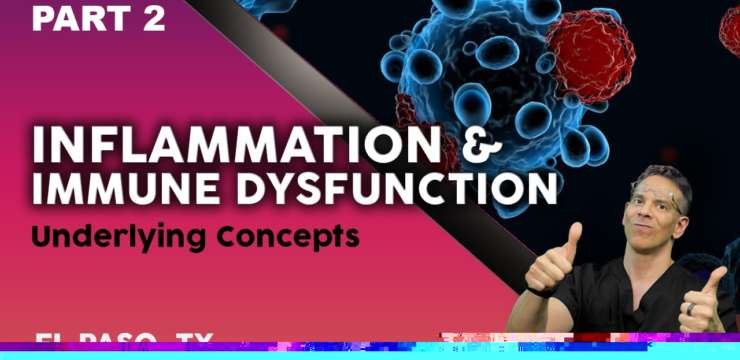
Explore carpal tunnel syndrome for chiropractic care for effective relief and management of symptoms related to this condition.
Table of Contents
Chiropractic Care for Carpal Tunnel Syndrome: A Comprehensive Guide to Relief and Recovery
Carpal tunnel syndrome (CTS) can feel like a pesky gremlin wreaking havoc on your wrists, turning simple tasks like typing or holding a coffee mug into a frustrating ordeal. If you’ve ever experienced numbness, tingling, or that annoying “pins and needles” sensation in your hands, you’re not alone. CTS affects millions of people worldwide, and for those in El Paso, TX, seeking relief, chiropractic care from experts like Dr. Alexander Jimenez, DC, APRN, FNP-BC, offers a beacon of hope. This blog post dives deep into the world of CTS, exploring its causes, how chiropractic care can help, and the unique role Dr. Jimenez plays in treating personal injury cases in El Paso. We’ll also sprinkle in some light humor to keep things engaging, because let’s face it—nobody likes a wrist that acts like it’s auditioning for a sci-fi horror flick.
Understanding Carpal Tunnel Syndrome: What’s Going On in Your Wrist?
Carpal tunnel syndrome occurs when the median nerve, which runs through a narrow passage in your wrist called the carpal tunnel, gets compressed. Think of it like a highway during rush hour—too much traffic (swelling or inflammation) and not enough lanes (space in the tunnel), leading to a nerve traffic jam. This compression causes symptoms like numbness, tingling, weakness, or pain in the hand, fingers, or forearm. It’s like your hand is throwing a tantrum, refusing to cooperate when you need it most.
Symptoms of Carpal Tunnel Syndrome
- Numbness or tingling in the thumb, index, middle, or ring fingers (sorry, pinky, you’re usually spared).
- Pain or discomfort in the hand or wrist, sometimes creeping up to the forearm.
- Weakness that makes it hard to grip objects—like when your coffee mug decides to stage a dramatic escape.
- Burning sensation that feels like your hand is hosting a tiny campfire.
These symptoms often worsen at night, making sleep feel like a wrestling match with your own hand. They can also flare up during activities like typing, driving, or holding a phone for too long.
Risk Factors and Causes
Several factors contribute to CTS, and it’s not just about typing all day (though that doesn’t help). Here’s a rundown of what might be setting the stage for your wrist woes:
- Repetitive Hand Movements: Jobs or hobbies involving repetitive wrist motions—like typing, assembly line work, or knitting—can irritate the carpal tunnel. Imagine your wrist saying, “I’m tired of this knitting marathon!”
- Poor Ergonomics: A desk setup that forces your wrists into awkward angles is like asking your hands to do yoga without stretching first.
- Anatomical Factors: A naturally narrow carpal tunnel or wrist injuries can make you more susceptible. It’s like having a tiny hallway in a house full of furniture.
- Medical Conditions: Diabetes, rheumatoid arthritis, thyroid disorders, and obesity can increase inflammation or fluid retention, squeezing the median nerve (Davis et al., 2021).
- Pregnancy: Hormonal changes and fluid retention can temporarily turn your wrists into a nerve-compressing zone.
- Trauma or Injury: Wrist fractures or sprains can narrow the carpal tunnel, adding to the chaos.
- Cervical Spine Issues: Problems in the neck, like misaligned vertebrae or nerve irritation, can contribute to hand symptoms, a phenomenon known as “double crush syndrome” (Harrigan, 2025).
The Cervical Spine Connection
Here’s where things get interesting: your wrist pain might not just be about your wrist. The median nerve starts in the cervical spine (your neck), and irritation there can amplify symptoms in your hand. This “double crush syndrome” means nerve compression at the neck and wrist can gang up on you, like two bullies picking on the same kid. Misalignments in the cervical spine, called subluxations, can disrupt nerve signals, making your hand symptoms worse (Jimenez, 2016a).
Chiropractors like Dr. Jimenez look at the whole picture—your spine, shoulders, and wrists—to address these overlapping issues. It’s like solving a puzzle where the pieces are scattered across your body.
References
- Davis, P. T., & Yochum, T. R. (2021). Conservative management of carpal tunnel syndrome: A review. Journal of Manipulative and Physiological Therapeutics, 44(8), 614–622. pubmed.ncbi.nlm.nih.gov/34783004/
- Harrigan, T. (2025, August 18). 90% of carpal tunnel patients also have nerve root irritation in the cervical spine. X Post. t.co/6sOV2YEfdZ
- Jimenez, A. (2016a, May). Numbness & tingling on hands. El Paso Chiropractor Blog. www.elpasochiropractorblog.com/2016/05/numbness-tingling-on-hands.html
Why Chiropractic Care? A Natural Path to Relief
Chiropractic care offers a non-invasive, drug-free approach to managing CTS, focusing on the root causes rather than just masking symptoms. Unlike popping painkillers or scheduling surgery, chiropractic care aims to restore proper nerve function and improve overall body mechanics. Dr. Alexander Jimenez, with over 25 years of experience in El Paso, combines chiropractic techniques with functional medicine to create personalized treatment plans that tackle CTS from multiple angles (Jimenez, 2025).
How Chiropractic Care Helps CTS
- Spinal Adjustments: By correcting misalignments in the cervical spine, chiropractors can reduce nerve irritation that contributes to CTS symptoms. It’s like unclogging a pipe to let water (or nerve signals) flow freely again.
- Wrist and Arm Adjustments: Gentle manipulations of the wrist, elbow, and shoulder can relieve pressure on the median nerve and improve joint mobility (Davis et al., 2021).
- Soft Tissue Therapy: Techniques like myofascial release or massage can reduce muscle tension and inflammation around the carpal tunnel, giving the median nerve some breathing room.
- Ergonomic and Lifestyle Advice: Dr. Jimenez provides guidance on posture, workstation setup, and exercises to prevent further strain. Think of it as giving your wrists a well-deserved vacation.
- Functional Medicine Integration: By addressing underlying issues like inflammation or metabolic disorders, Dr. Jimenez’s approach ensures long-term relief (Southwest Functional Medicine, n.d.).
The Science Behind It
Studies support chiropractic care for CTS. A 1998 randomized clinical trial found that chiropractic treatments, including manual adjustments, were as effective as conventional medical treatments for CTS symptoms (Davis et al., 1998). Another study highlighted the benefits of manual therapy in reducing pain and improving function in CTS patients (Fernández-de-Las-Peñas et al., 2017). These findings suggest that chiropractic care can be a game-changer for those looking to avoid surgery or medications.
Dr. Jimenez’s Approach
At Injury Medical & Chiropractic Clinic in El Paso, Dr. Jimenez uses advanced diagnostics, like nerve conduction studies and imaging, to pinpoint the exact causes of your symptoms. His dual licensure as a chiropractor and nurse practitioner allows him to blend evidence-based chiropractic techniques with functional medicine principles, addressing both musculoskeletal and systemic factors (Jimenez, 2025). For example, if your CTS is linked to diabetes or thyroid issues, he’ll incorporate nutritional counseling and lifestyle changes to tackle those root causes.
References
- Davis, P. T., Hulbert, J. R., Kassak, K. M., & Meyer, J. J. (1998). Comparative efficacy of conservative medical and chiropractic treatments for carpal tunnel syndrome: A randomized clinical trial. Journal of Manipulative and Physiological Therapeutics, 21(6), 317–326. pubmed.ncbi.nlm.nih.gov/11807347/
- Fernández-de-Las-Peñas, C., Ortega-Santiago, R., de la Llave-Rincón, A. I., Martinez-Perez, A., Fahandezh-Saddi Díaz, H., Martínez-Martín, J., Pareja, J. A., & Cuadrado-Pérez, M. L. (2017). Manual therapy versus surgery for carpal tunnel syndrome: A randomized parallel-group trial. The Journal of Pain, 18(4), 437–444. pubmed.ncbi.nlm.nih.gov/28075090/
- Jimenez, A. (2025). Dr. Alexander Jimenez, DC, APRN, FNP-BC, IFMCP, CFMP, ATN. LinkedIn Profile. www.linkedin.com/in/dralexjimenez/
- Southwest Functional Medicine. (n.d.). El Paso, TX Health Coach Clinic – Functional Medicine and Wellness. Health Coach Clinic. healthcoach.clinic/
- Jimenez, A. (2016b, May). Chiropractic treatment for carpal tunnel. El Paso Chiropractor Blog. www.elpasochiropractorblog.com/2016/05/chiropractic-treatment-for-carpal.html
Discovering The Benefits of Chiropractic Care- Video
The Role of the Upper Extremities and Cervical Spine
Your hands and upper extremities are like the MVPs of daily life—typing, cooking, texting, and maybe even attempting to juggle (no judgment if you drop the ball). But when CTS strikes, it’s like your hands go on strike. The connection between your hands, arms, and cervical spine is critical, and chiropractic care addresses this intricate network.
The Hand-Arm-Spine Connection
The median nerve starts in the cervical spine (C5-T1 nerve roots), travels through the shoulder and elbow, and ends in the hand. Any disruption along this path—like a subluxation in the neck or tension in the forearm—can amplify CTS symptoms. The “double crush syndrome” mentioned earlier is a prime example: nerve irritation in the neck can make the median nerve more sensitive to compression in the wrist (Harrigan, 2025).
For example, poor posture (like slouching over your phone) can misalign the cervical spine, putting pressure on the nerve roots. This cascades down to your wrist, making CTS symptoms worse. It’s like a domino effect where one misstep in your neck messes with your hand’s game plan.
Chiropractic Interventions
Dr. Jimenez uses a multi-pronged approach to address this connection:
- Cervical Spine Adjustments: Correcting subluxations in the neck reduces nerve irritation, improving signal flow to the hand.
- Upper Extremity Adjustments: Manipulations to the shoulder, elbow, and wrist restore proper alignment and reduce tension.
- Therapeutic Exercises: Stretching and strengthening exercises, like wrist flexor stretches or grip training, improve muscle balance and reduce strain (Jimenez, 2016b).
- Postural Correction: Guidance on maintaining proper posture during work or daily activities prevents further nerve compression.
By addressing the entire nerve pathway, chiropractic care ensures that your hands, arms, and spine work together like a well-rehearsed orchestra, not a chaotic jam session.
References
- Harrigan, T. (2025, August 18). 90% of carpal tunnel patients also have nerve root irritation in the cervical spine. X Post. t.co/6sOV2YEfdZ
- Jimenez, A. (2016b, May). Chiropractic treatment for carpal tunnel. El Paso Chiropractor Blog. www.elpasochiropractorblog.com/2016/05/chiropractic-treatment-for-carpal.html
Overlapping Risk Profiles: Why CTS Isn’t Just About Your Wrist
CTS doesn’t exist in a vacuum—it’s often tangled up with other musculoskeletal and systemic issues. These overlapping risk profiles can make symptoms worse and require a comprehensive approach to treatment.
Common Overlapping Conditions
- Cervical Radiculopathy: Nerve root irritation in the neck can mimic or worsen CTS symptoms, as seen in double crush syndrome (Harrigan, 2025).
- Thoracic Outlet Syndrome: Compression of nerves or blood vessels in the shoulder area can contribute to hand numbness and tingling (Rozmaryn et al., 2021).
- Tendonitis or Tenosynovitis: Inflammation of the tendons in the wrist can crowd the carpal tunnel, increasing pressure on the median nerve.
- Metabolic Disorders: Conditions like diabetes or hypothyroidism can cause inflammation or fluid retention, exacerbating CTS (Wipperman & Goerl, 2022).
- Poor Posture: Slouching or forward head posture can strain the neck and shoulders, contributing to nerve compression.
How Chiropractic Care Addresses These
Chiropractic care, especially under Dr. Jimenez’s guidance, tackles these overlapping issues holistically:
- Comprehensive Assessments: Using advanced imaging (like X-rays or MRIs) and nerve conduction studies, Dr. Jimenez identifies all contributing factors, from spinal misalignments to systemic inflammation (Jimenez, 2025).
- Personalized Treatment Plans: Combining spinal adjustments, soft tissue therapy, and lifestyle changes, Dr. Jimenez addresses both local (wrist) and systemic (metabolic) issues.
- Functional Medicine: By incorporating nutritional counseling and detox programs, Dr. Jimenez reduces inflammation that may worsen CTS (Southwest Functional Medicine, n.d.).
This approach ensures that you’re not just treating the wrist but addressing the whole body, like fixing a car’s engine instead of just patching a tire.
References
- Harrigan, T. (2025, August 18). 90% of carpal tunnel patients also have nerve root irritation in the cervical spine. X Post. t.co/6sOV2YEfdZ
- Rozmaryn, L. M., & Zelouf, D. S. (2021). Carpal tunnel syndrome: A comprehensive review. Hand Clinics, 37(2), 223–234. pubmed.ncbi.nlm.nih.gov/33855879/
- Wipperman, J., & Goerl, K. (2022). Carpal tunnel syndrome: Diagnosis and management. American Family Physician, 105(3), 285–293. pubmed.ncbi.nlm.nih.gov/35286465/
- Jimenez, A. (2025). Dr. Alexander Jimenez, DC, APRN, FNP-BC, IFMCP, CFMP, ATN. LinkedIn Profile. www.linkedin.com/in/dralexjimenez/
- Southwest Functional Medicine. (n.d.). El Paso, TX Health Coach Clinic – Functional Medicine and Wellness. Health Coach Clinic. healthcoach.clinic/
Dr. Alexander Jimenez: El Paso’s Personal Injury Specialist
In El Paso, personal injury cases—like car accidents or workplace injuries—often involve CTS or related musculoskeletal issues. Dr. Alexander Jimenez stands out as a distinguished practitioner, offering specialized care for victims of personal injury. His unique blend of chiropractic expertise and functional medicine makes him a go-to provider for those seeking recovery and legal support.
Why Dr. Jimenez Excels in Personal Injury Cases
- Advanced Diagnostics: Dr. Jimenez uses state-of-the-art imaging (X-rays, MRIs) and diagnostic evaluations (nerve conduction studies) to accurately document injuries. This is crucial for legal cases, as precise documentation supports claims (Jimenez, 2025).
- Dual-Scope Expertise: As a chiropractor and nurse practitioner, Dr. Jimenez bridges medical and legal needs, providing comprehensive reports that detail the extent of injuries and treatment plans.
- Holistic Treatment: His approach combines spinal adjustments, soft tissue therapy, and functional medicine to address injuries from car accidents, slips, or workplace incidents, ensuring optimal recovery (Southwest Functional Medicine, n.d.).
- Patient Education: Dr. Jimenez empowers patients with resources like videos and articles on his website, helping them understand their injuries and treatment options (Jimenez, 2025).
Liaison Between Legal and Medical
In personal injury cases, clear documentation is key. Dr. Jimenez’s clinic provides detailed medical reports that link injuries to the incident, supporting legal claims. For example, if a car accident causes whiplash and subsequent CTS, Dr. Jimenez can document how cervical spine trauma contributes to wrist symptoms, strengthening your case (Jimenez, 2016a). His telehealth services also make it easy for patients to access care, ensuring continuity even during legal proceedings (Jimenez, 2025).
References
- Jimenez, A. (2025). Dr. Alexander Jimenez, DC, APRN, FNP-BC, IFMCP, CFMP, ATN. LinkedIn Profile. www.linkedin.com/in/dralexjimenez/
- Southwest Functional Medicine. (n.d.). El Paso, TX Health Coach Clinic – Functional Medicine and Wellness. Health Coach Clinic. healthcoach.clinic/
- Jimenez, A. (2016a, May). Numbness & tingling on hands. El Paso Chiropractor Blog. www.elpasochiropractorblog.com/2016/05/numbness-tingling-on-hands.html
- Jimenez, A. (2025). Dr. Alexander Jimenez, DC – Chiropractor in El Paso, TX. Healthgrades. www.healthgrades.com
Small Changes, Big Impact: Lifestyle Tips for CTS Relief
Preventing and managing CTS doesn’t always require a major overhaul. Dr. Jimenez’s clinical insights emphasize small, practical changes that can make a big difference. Here are some tips to keep your wrists happy:
- Optimize Your Workspace:
- Adjust your keyboard and mouse to keep your wrists in a neutral position—like a handshake, not a swan dive.
- Use an ergonomic keyboard or wrist rest to reduce strain. Your wrists will thank you for the VIP treatment.
- Take Breaks:
- Strengthen and Stretch:
- Mind Your Posture:
- Sit up straight and keep your shoulders relaxed to avoid straining your neck and shoulders. Pretend you’re a superhero with perfect posture—cape optional.
- Use a chair with lumbar support to maintain spinal alignment.
- Address Systemic Health:
- Use Supportive Devices:
These small tweaks can add up, turning your wrists from cranky complainers to cooperative teammates.
References
- Jimenez, A. (2016b, May). Chiropractic treatment for carpal tunnel. El Paso Chiropractor Blog. www.elpasochiropractorblog.com/2016/05/chiropractic-treatment-for-carpal.html
- Southwest Functional Medicine. (n.d.). El Paso, TX Health Coach Clinic – Functional Medicine and Wellness. Health Coach Clinic. healthcoach.clinic/
The Long-Term Benefits of Chiropractic Care for CTS
Chiropractic care isn’t just a quick fix—it’s a long-term strategy for keeping CTS at bay and improving overall health. By addressing the root causes and overlapping risk profiles, Dr. Jimenez’s approach offers lasting benefits:
- Reduced Pain and Discomfort: Regular adjustments and therapy reduce nerve compression, easing symptoms.
- Improved Function: Restoring joint mobility and nerve function means you can type, lift, or play basketball without wincing.
- Prevention of Recurrence: Lifestyle changes and ergonomic adjustments help prevent CTS from recurring.
- Holistic Health: By integrating functional medicine, Dr. Jimenez ensures your body is in top shape, reducing the risk of related conditions like neck pain or tendonitis (Southwest Functional Medicine, n.d.).
Patients at Injury Medical & Chiropractic Clinic often report life-changing results, from better sleep to improved energy levels, as their bodies heal naturally (Jimenez, 2023).
References
- Southwest Functional Medicine. (n.d.). El Paso, TX Health Coach Clinic – Functional Medicine and Wellness. Health Coach Clinic. healthcoach.clinic/
- Jimenez, A. (2023, October 31). Real patients, real results. Life-changing chiropractic care | El Paso, TX (2023). El Paso Chiropractor Blog. dralexjimenez.com
Conclusion: A Serious Note on Your Path to Recovery
While we’ve had a bit of fun comparing CTS to cranky gremlins and nerve traffic jams, carpal tunnel syndrome is a serious condition that can significantly impact your quality of life. Chiropractic care, particularly under the expertise of Dr. Alexander Jimenez in El Paso, TX, offers a comprehensive, non-invasive solution to relieve symptoms, address root causes, and prevent recurrence. By focusing on the cervical spine, upper extremities, and systemic health, Dr. Jimenez’s approach ensures that you’re not just treating symptoms but building a foundation for long-term wellness.
Disclaimer: This blog post is for informational purposes only and is not a substitute for professional medical advice, diagnosis, or treatment. Always consult a qualified healthcare provider, such as a licensed chiropractor or physician, before starting any treatment plan. For personalized care in El Paso, contact Dr. Alexander Jimenez at Injury Medical & Chiropractic Clinic at (915) 850-0900 or visit www.dralexjimenez.com.
References
- Davis, P. T., & Yochum, T. R. (2021). Conservative management of carpal tunnel syndrome: A review. Journal of Manipulative and Physiological Therapeutics, 44(8), 614–622. pubmed.ncbi.nlm.nih.gov/34783004/
- Fernández-de-Las-Peñas, C., Ortega-Santiago, R., de la Llave-Rincón, A. I., Martínez-Pérez, A., Fahandezh-Saddi Díaz, H., Martínez-Martín, J., Pareja, J. A., & Cuadrado-Pérez, M. L. (2017). Manual therapy versus surgery for carpal tunnel syndrome: A randomized parallel-group trial. The Journal of Pain, 18(4), 437–444. pubmed.ncbi.nlm.nih.gov/28075090/
- Rozmaryn, L. M., & Zelouf, D. S. (2021). Carpal tunnel syndrome: A comprehensive review. Hand Clinics, 37(2), 223–234. pubmed.ncbi.nlm.nih.gov/33855879/
- Wipperman, J., & Goerl, K. (2022). Carpal tunnel syndrome: Diagnosis and management. American Family Physician, 105(3), 285–293. pubmed.ncbi.nlm.nih.gov/35286465/
- Jimenez, A. (2016a, May). Numbness & tingling on hands. El Paso Chiropractor Blog. www.elpasochiropractorblog.com/2016/05/numbness-tingling-on-hands.html
- Jimenez, A. (2016b, May). Chiropractic treatment for carpal tunnel. El Paso Chiropractor Blog. www.elpasochiropractorblog.com/2016/05/chiropractic-treatment-for-carpal.html
- Southwest Functional Medicine. (n.d.). El Paso, TX Health Coach Clinic – Functional Medicine and Wellness. Health Coach Clinic. healthcoach.clinic/
- Jimenez, A. (2025). Dr. Alexander Jimenez, DC, APRN, FNP-BC, IFMCP, CFMP, ATN. LinkedIn Profile. www.linkedin.com/in/dralexjimenez
- Harrigan, T. (2025, August 18). 90% of carpal tunnel patients also have nerve root irritation in the cervical spine. X Post. t.co/6sOV2YEfdZ
Disclaimers
Professional Scope of Practice *
The information herein on "Chiropractic Care Strategies for Carpal Tunnel Syndrome" is not intended to replace a one-on-one relationship with a qualified health care professional or licensed physician and is not medical advice. We encourage you to make healthcare decisions based on your research and partnership with a qualified healthcare professional.
Blog Information & Scope Discussions
Welcome to El Paso's wellness blog, where Dr. Alex Jimenez, DC, FNP-C, a board-certified Family Practice Nurse Practitioner (FNP-C) and Chiropractor (DC), presents insights on how our team is dedicated to holistic healing and personalized care. Our practice aligns with evidence-based treatment protocols inspired by integrative medicine principles, similar to those found on dralexjimenez.com, focusing on restoring health naturally for patients of all ages.
Our areas of chiropractic practice include Wellness & Nutrition, Chronic Pain, Personal Injury, Auto Accident Care, Work Injuries, Back Injury, Low Back Pain, Neck Pain, Migraine Headaches, Sports Injuries, Severe Sciatica, Scoliosis, Complex Herniated Discs, Fibromyalgia, Chronic Pain, Complex Injuries, Stress Management, Functional Medicine Treatments, and in-scope care protocols.
Our information scope is limited to chiropractic, musculoskeletal, physical medicine, wellness, contributing etiological viscerosomatic disturbances within clinical presentations, associated somato-visceral reflex clinical dynamics, subluxation complexes, sensitive health issues, and functional medicine articles, topics, and discussions.
We provide and present clinical collaboration with specialists from various disciplines. Each specialist is governed by their professional scope of practice and their jurisdiction of licensure. We use functional health & wellness protocols to treat and support care for the injuries or disorders of the musculoskeletal system.
Our videos, posts, topics, subjects, and insights cover clinical matters, issues, and topics that relate to and directly or indirectly support our clinical scope of practice.*
Our office has reasonably attempted to provide supportive citations and has identified the relevant research studies or studies supporting our posts. We provide copies of supporting research studies available to regulatory boards and the public upon request.
We understand that we cover matters that require an additional explanation of how they may assist in a particular care plan or treatment protocol; therefore, to discuss the subject matter above further, please feel free to ask Dr. Alex Jimenez, DC, APRN, FNP-BC, or contact us at 915-850-0900.
We are here to help you and your family.
Blessings
Dr. Alex Jimenez DC, MSACP, APRN, FNP-BC*, CCST, IFMCP, CFMP, ATN
email: coach@elpasofunctionalmedicine.com
Licensed as a Doctor of Chiropractic (DC) in Texas & New Mexico*
Texas DC License # TX5807
New Mexico DC License # NM-DC2182
Licensed as a Registered Nurse (RN*) in Texas & Multistate
Texas RN License # 1191402
ANCC FNP-BC: Board Certified Nurse Practitioner*
Compact Status: Multi-State License: Authorized to Practice in 40 States*
Graduate with Honors: ICHS: MSN-FNP (Family Nurse Practitioner Program)
Degree Granted. Master's in Family Practice MSN Diploma (Cum Laude)
Dr. Alex Jimenez, DC, APRN, FNP-BC*, CFMP, IFMCP, ATN, CCST
My Digital Business Card






